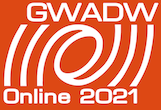Speaker
Description
The Einstein Telescope (ET) is a third generation gravitational wave observatory, currently in the planning stage in Europe. The ET project involves the construction of a triangular shape underground facility with 10 kilometres long arms buried in ca. 250 m depth. At the corner points, large caverns host the required infrastructure. The border region between the Netherlands, Belgium and Germany is considered a potential location and is investigated in a multidisciplinary feasibility study, E-TEST, funded by the EU and various authorities of the involved countries.
E-TEST aims to construct geological, hydrogeological and geotechnical models of the potential ET area. Subsurface data are crucial to develop these models. Several geophysical methods allow to collect these data from various depth ranges in different resolutions. Planned geophysical surveys are (I) ERT / IP measurements and (II) active seismic surveys using a sledge hammer to map the shallow subsurface, (III) active seismic surveys using vibro-seis trucks and (IV) passive seismic surveys using naturally occurring seismicity to image the shallow and deep subsurface. 5 dry boreholes hosting seismometers will be drilled. Geophysical logging of these boreholes will take place prior to installation. The combination of all these geophysical data acts as a solid base for the subsurface models of the E-TEST area. The presentation at GWADW2021 provides an insight on the geophysical surveys conducted in the E-TEST project.

